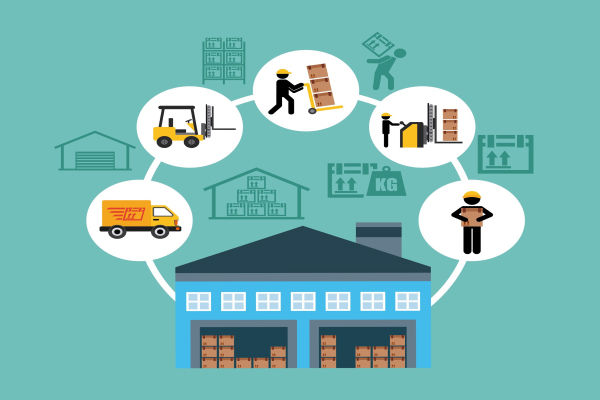

Areas of a Company
The evolution of industrial organizations from the 18th century industrial revolution led companies to buy materials that were originally manufactured by themselves (the name of this is outsourcing, which I'll put below).
Over the years, production began to specialize more and more, considering the complexity of new technologies and the need to obtain economies of scale (to produce a lot to reduce production costs) in production processes. point of generating the need for the purchasing area to organize itself in an activity separate from the production area. The well-done management of supplies results in significant advantages, since it allows the reduction of capital investments.
It is necessary to know the behavior of demand, which is increasing, which is how the consumer market behaves, and based on this knowledge, to define a forecast model, which will allow the definition of stock levels that will be closer to the real future demand.

The areas of a company are generally in agreement with the relationship with other areas of the company and with demand.
-Financial Area: responsible for managing the financial resources necessary to ensure the possibility of purchasing the resources to be transformed or transformation, required by the production process.
-Production area: is the area that adds value, carrying out the transformation of resources to be transformed into goods or services that the company proposes to provide, within the deadlines requested by customers.
-Marketing Area: Fundamental within the structure of organizations, with the responsibility to define the volume to be produced for each item, which leads to the definition of volumes that must be purchased in purchasing and inventory management.
-Human resources area: Companies are increasingly finding it difficult to find qualified personnel for the company's functions, given the competition between companies for the best talent, especially in periods of economic growth.
-IT Area: It is the area of organizations that assumed responsibility for the form of registration and keeping of company information. It makes marketing studies can be processed and transformed by purchasing management, dividing end products into their components and allowing the definition of the needs of each one, without the need for complex and error-prone manual calculations.
-Distribution logistics area: Working directly with the distribution management, manages the way to ship the finished products, once again seeking efficiency and meeting customer expectations.
The administration of materials or supplies can be defined as the activity that plans, executes and controls, in the most efficient and economical conditions, the material flow, from the technical specifications of the articles to be acquired until the delivery of the finished product to the customer. Well-structured supplies allow us to obtain competitive advantages through cost reduction, reduction of investments in stocks, improvements in purchasing conditions through negotiations with suppliers and customer and consumer satisfaction in relation to the products offered by the company.